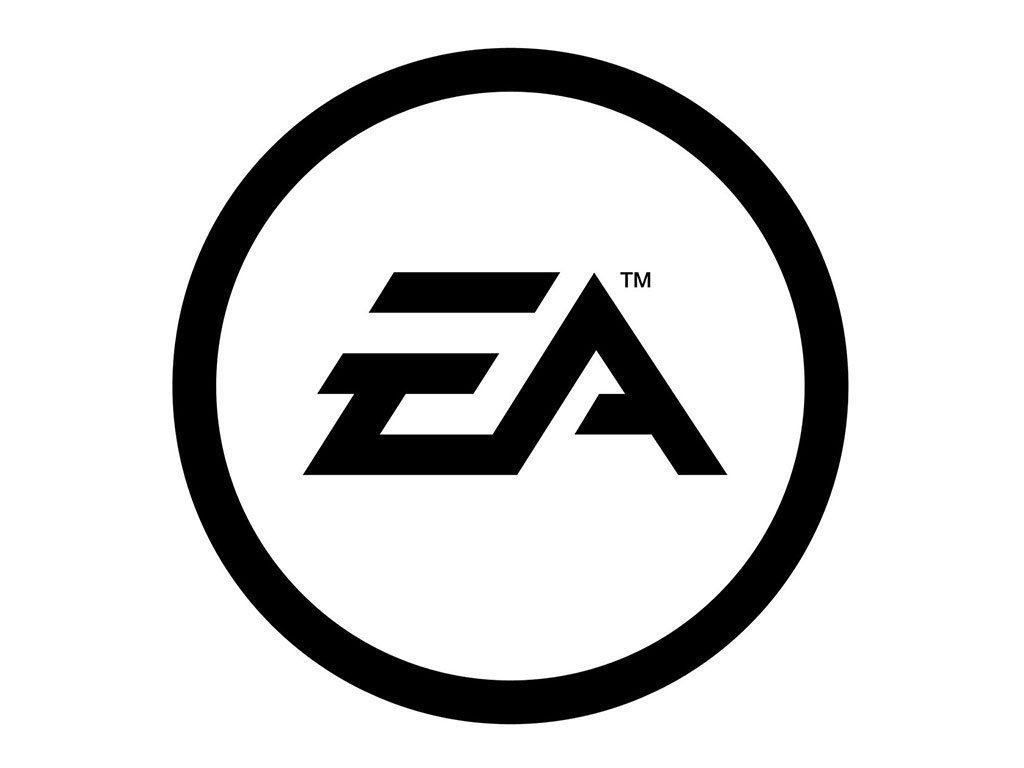I wrote this article about EA for the May 2012 issue of Institutional Investor Magazine. I had the pleasure to present EA at the FAME conference in San Francisco in late April, and here is a link to the presentation (we obviously have a position in EA).
Electronic Arts – Revenge of the Nerd
Electronic Arts stock is scratching 52-week lows. It is unloved, but for some good reasons: its sales have stagnated for years; its earnings, though rising, are still below the 2003 level; and finally, industry-wide sales of packaged video games were down an apocalyptic 25% in March, and they’ve declined four months in a row. On the surface there are plenty of reasons to hate this stock, but once you start unpiling all the negativity you discover that EA is a compelling growth company trading at a significant discount to its fair value.
EA’s past is ridden with brilliant successes that lead to subsequent arrogance. It was the largest video-game maker in the world in the 2000s; and, like many successful companies, it started to treat its success as an entitlement, not as a hard-earned victory. In the mid-2000s it started to make too many games, and the quality of its games drastically declined. To make things worse, Nintendo came out with Wii, less powerful then Sony’s or Microsoft’s high-definition system, but instead of a joystick it came with motion control. Since Wii was underpowered, EA did not expect it to be a success and did not develop many titles for it. When Wii became an overnight success, EA had to catch up.
Over last few years EA regained its focus and cut down the number of games introduced every year from 52 to a dozen. The quality of EA games improved dramatically. On the surface it looks like EA’s sales have stagnated for years, but they have not. EA has been winding down the distribution of games made by other publishers, and so low-margin distribution revenues declined from over $600 million a few years ago to about $200 million today, masking healthy growth in EA’s core games business.
A four-month decline in packaged games sales sends shivers through investors, but it should not. The bulk of the decline is happening in handheld devices (Nintendo DS software sales were down 78%) that have been losing market share to smartphones (more on that later). Also, Nintendo Wii sales were down 47% – its standard-definition console has been losing market share at a very fast pace to Microsoft’s Xbox. Xbox has a much more powerful processor, more advanced graphics, and its Kinect camera reads gestures – no need to wave around the bulky Wii remote (finally Microsoft is ahead of the game in something). Of course these statistics only cover packaged games and don’t count digitally distributed games, which are growing by leaps and bounds.
There are two growth themes that attracted us to Electronic Arts: increasing revenues and expanding profit margins.
Revenue
Imagine this situation: You are sitting in the dental office, waiting for your turn in the chair, and across from you is a woman in her mid-thirties or early forties, playing a video game on a handheld device (a Gameboy or Sony PlayStation Portable). This image doesn’t fit well with our societal norms – adults are not supposed to play video games, at least not in public. But the iPhone and subsequently other smartphones have changed that – the social stigma is gone, and playing games in public is not exclusive to rotten kids, not anymore. Plus, nobody knows whether you playing a game, texting, or emailing.
Adults are a perfect demographic for games: we take public transportation, go to doctors who value their own time more than ours, drive kids to practices (more waiting); in other words we have a lot of idle time, and since the high-IQ (smart) phone is always with us, we kill time playing games. For the price of Starbuck’s super-duper Frappuccino and a scone, we can buy a few hours of entertainment. In addition, adults are the perfect demographic because we have money (at least more money than kids). The smartphone gaming industry is still in its infancy (for instance, smartphone market share in the US is about 35% ); and as prices drop and the price gap between dumb and smartphones narrows, smartphone market share has the potential to double, which will lead to more gamers globally.
And then there is Facebook. Facebook is arguably the best time-wasting website known to man (and woman). It presents another opportunity for game makers, opening up a new timeslot that was previously unavailable to most adults: playing games at work (while you are supposed to be working). This market was virtually nonexistent heretofore: installing games on one’s employer’s computer was not done, because it left evidence of mischief. But Web-based Facebook-type games are not graphics- and time-intensive and don’t require a big time commitment.
So the question comes to mind, can EA capitalize on smartphones and Facebook?
EA is no Zynga when it comes to social-network games (nor does it trade at 30x 2013 EPS, or 5.8x revenues); but it has an impressive slate of brands, from sports brands for PCs and consoles (Madden NFL, FIFA, Tiger Woods…) to shootem-up games (Battlefield, Mass Effect) to a lot of casual games that are easy to scale to the social platform (Sims, Monopoly, Tetris, Trivia Pursuit…). EA brought Sims to Facebook, and it was a learning experience to put it lightly. Initially it was a great success, but EA stumbled and did not follow through with updates. But EA bought Playfish and PopCap, which have expertise in social and casual games and have had plenty of hits of their own, and now they are taking EA’s rich portfolio to smartphones and Facebook.
Will smartphone and Facebook games cannibalize existing business?
For the most part the answer is no. Facebook games are usually social or casual games played during a new timeslot. Hardcore gamers that play PC or console games are unlikely the ones playing Facebook games. Smartphones are somewhat different. Some games sold on smartphones definitely come at the expense of games for handhelds (Nintendo DS, PSP, or Gameboy). Smartphones are a very serious and formidable competitor to handhelds, but though they have cannibalized the younger-player market, they have also unlocked a new, previously nonexistent market: shameless adults playing in public.
Investors have also been spooked about EA’s Star Wars Old Republic (SWOR), a massively multiplayer online (MMO) game, a competitor to the most successful game in this class, World of Warcraft, developed by ActiVision. SWOR had been in development for several years, was released in December 2011, and we’ve seen speculation that it cost EA over $100 million to make it. Investors were rightfully worried about the success of such a significant undertaking. So far SWOR has been a great success. It has 1.7 million players, and feedback has been overwhelmingly positive. SWOR will be incredibly profitable for EA. In addition to paying $60 to buy the game, a player pays $150-180 a year to keep playing it – a great recurring-revenue engine. At 1.7 million paying users, SWOR generates $300-400 million of high-margin revenue to EA.
Margins
So far we’ve discussed revenue growth for EA, but there is another part to the story that is no less important – profit margins. Traditionally, graphics-rich/intensive games (think Mass Effect, Medal of Honor…) made for consoles (Xbox, Sony PlayStation) have been sold through retailers. However, instant gratification is as American as baseball, and the internet is a perfect and (almost instant) vehicle for the distribution of games.
With constantly rising broadband speeds, downloading large games is becoming less of an undertaking. However, the transition to digital downloads will be gradual. Downloading games to consoles is still constrained by the size of the console’s hard drive (for instance, a low-end version of Xbox comes with only a four-gigabyte hard drive, not enough to install graphics-rich games). Also, Microsoft and Sony have been hesitant to allow new game releases to be made available on their consoles in digital form right away, as they need retailers to peddle their low-margin gaming hardware. This will likely change with the release of new hardware in a year or two – digital downloads are the future, and Microsoft and Sony can try to postpone it but won’t be able to change it. In the meantime EA has been selling digital expansion packs (additional maps) to their games on consoles.
On the other hand, PCs, a quarter of EA’s revenue, are primed for digital distribution – their hard drives are big enough to handle large downloads. Considering music, video, and game piracy, consumers have plenty of experience downloading digital content. EA’s full-game downloads doubled over the last year.
As more and more games are sold digitally, bypassing the traditional retail network of GameStop, Best Buy, and Wal-Mart, EA will see an increase in its profit margins. EA won’t have pay to produce a packaged good and discount its games for retailers and wholesalers. In other words, instead of receiving $40 for a $60 game, EA will be receiving $60.
There is significant digitization of games taking place within EA. Digital games come with much higher margins (a 10%-25% higher EBITDA margin than packaged games) and are growing at a much faster rate than packaged games. Today they represent about 25% of EA’s sales. In a few years it should approach 50%. Margin expansion opportunity is significant and very real. ActiVision – a company of similar sales size – has operating margins of 30%, while EA’s margins are 12%. The explanation for the divergence in margins is simple: digital content! ActiVision’s World of Warcraft is about a quarter of its sales, digital sales are about 40% of its total sales, and digital sales come with higher margins. If EA achieves two-thirds of ActiVision margins, it will have earnings power north of $2 a share. EA has $4 of net cash per share, thus today we are given an opportunity to buy EA for 4.5 times earnings.
P.S. (May 15, 2012)
EA reported decent numbers earlier this week. Sales were flat if you exclude the decline in its distribution business. The entire decline in the packaged goods business – the one that makes headlines like “Double-Digit Decline in Video Games Sales” was offset by an increase in digital games – up 58%. But that didn’t matter; the stock declined because EA announced that the number of Star Wars Old Republic (SWOR) subscribers had dropped from 1.7 million to 1.3 million in a few months. EA management said that a lot of casual (non-core massive-multiplayer) gamers dropped off. However, the user base goes through a natural seasoning – after all SWOR was just launched in December 2011.
Though for a while the stock may trade purely on SWOR subscriber numbers, I am not concerned about success or failure of SWOR, for two reasons: first, though it is important, it is still just one of five dozen of EA franchises. Its development costs have been fully expensed and thus will not break the company, though a complete failure would cause me to revise my upside target.
Second, and more important, I believe SWOR is a good game. How do I know? Let’s compare SWOR to the massive-multiplayer gold standard, The World of War Craft. According to Gamespot SWOR receivedan 85 rating out of 100 from Metacritic (professional reviewers) and 8.4 out of 10 from 2,397 users. The World of War Craft received 90 from Metacritic and 8.0 from 2,336 users. SWOR is thus rated on a par with the gold standard of this genre. The World of War Craft has been out for a while and has over 10 million users worldwide, and there is no reason why SWOR cannot reach a third of that number over the next few years.









0 comments